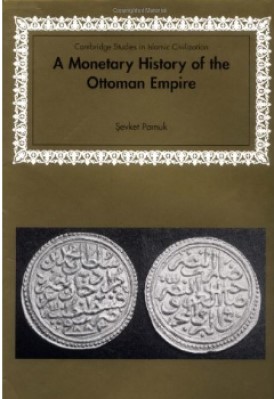
| A Monetary History Of The Ottoman Empire |
| Sevket Pamuk |
| 302 |
| |
| PDF Direct Download Link |
| Click for Hard Copy from Amazon |
A Monetary History of the Ottoman Empire
A MONETARY HISTORY OF THE OTTOMAN EMPIRE – Book Sample
About the Book – A MONETARY HISTORY OF THE OTTOMAN EMPIRE
A Monetary History of the Ottoman Empire -The Ottoman Empire stood at the crossroads of intercontinental trade at the dawn of the era of capitalism. For the Ottomans coinage was a maJor symbol of sovereignty and the leading means of exchange.
This volume examines the monetary history of that empire from its beginnings in the fourteenth century until the end of the First World War. Through a detailed examination of the currencies and related institutions of an empire which stretched from the Balkans through Anatolia, Syria, Egypt, and the Gulf to the Maghrib, the book demonstrates the complexity of the monetary arrangements and their evolution in response to both local developments and global economic forces.
Currency debasements, inflation and the ensuing popular opposition are studied in a political economy framework. The volume also affords valuable insights into social and political history and the evolution of Ottoman institutions. This is an important book by one of the most distinguished economic historians in the field. S, EVKET PAMUK is Professor of Economics and Economic History at Bogvazic,i University. His publications include A History of the Middle East Economies in the Twentieth Century (with Roger Owen, 1998), and The Ottoman Empire and European Capitalism, 1820-1913 (1987).
Introduction – Trade, money, and states in the Mediterranean basin
Money is usually defined by economists in terms of its functions, most prominently as a means of exchange, but also as a means of payment, a unit of account and a store of value. These roles also articulate a logical explanation of how and why the use of money originated. In the economists’ view, true money or full-fledged money needs to fulfill all of these functions. In fact, we know from its actual historical development that many forms of money performed only some of these functions.
Historically, the function of money as a means of payment appears to be older than its role as a means of exchange. Ancient rulers collected tribute and other forms of payment long before a market and the use of money as a means of exchange emerged. Even in a city like Carthage, and exclusively in the Persian empire, for instance, the coinage of money appeared solely for the purpose of providing a means of making military payments and not as a medium of exchange.1
It is thus possible to have money without market exchange and market exchange without money as in the case of barter.2 Barter was a costly and unwieldy system of exchange, however. With the establishment of a stable measure of value, exchange was greatly facilitated.
Although many goods served in this capacity, metals eventually began to be employed both as a unit of account and a means of exchange. The general acceptability of metallic money in effect reduced transaction costs and stimulated the expansion of trade. As a result, monetization, the expansion of the use of money, has been associated with commercialization, the emergence and spread of markets. Both the notion of money itself and the historical development of different forms of money depended critically on the institution of the market.3
Even more important than exchange and markets in the spread of the use of money was the expansion of long-distance trade. Many societies which possessed large resources in precious metals did not begin exploiting them until the development of trade called for plentiful supplies of money. An important forerunner of coined money was the precious metal bars privately stamped by merchants which appeared in Indian commerce and later in Babylonia and China.
The shekel of the Ancient Near East was nothing but a piece of silver bearing the stamp of a certain mercantile family, which was recognized for conscientousness in weighing. The Chinese tael was similarly a piece of bar silver stamped by the mercantile guilds. It is thus clear that exchange and trade preceded and created money rather than the other way around.4
States did not take over the creation of money and assume a monopoly of that process until later. In the form of coinage, money first appeared in seventh century BC Lydia, located not coincidentally, on the Anatolian coast, well within the trade networks of Antiquity.
An important motive for the political authorities in issuing coin was to provide themselves a convenient means of extracting and mobilizing revenue. By issuing coin and demanding its use in tax payments, the states established both a definition of legal tender for state payments and a uniform standard for private exchange. Nonetheless, we should underline that money as a means of state payments is logically distinct from its function as a means of exchange.5
After the earliest coinage of the Greek city states circulated around the Aegean and the Mediterranean as a medium of exchange, the conquests of Alexander the Great were instrumental in their introduction to Egypt, the Persian Empire and northern India.6
The Roman Empire represented an important stage in the development of money and monetary systems. The political and economic unification of the Mediterranean basin and the lands beyond facilitated the emergence of a monetary system based on gold, silver and copper coinage in this large area. With state regulation of the standards of each, a reasonably well-defined relationship developed between the
To read more about the A Monetary History Of The Ottoman Empire book Click the download button below to get it for free
Report broken link
Support this Website
for websites